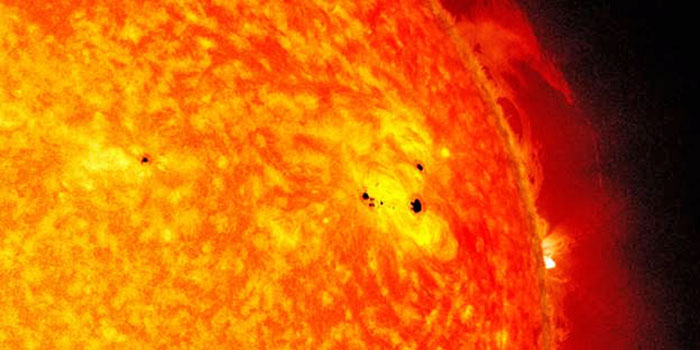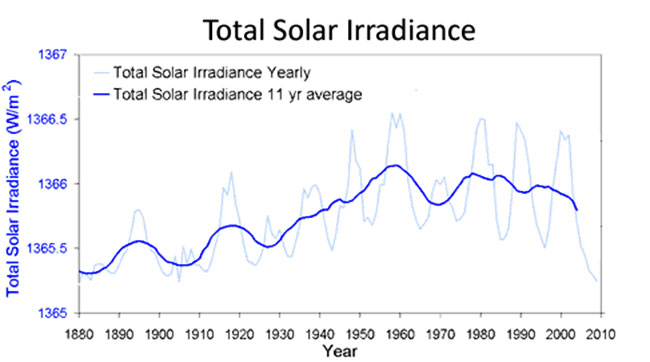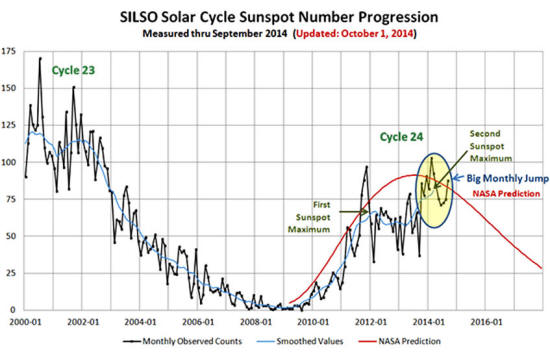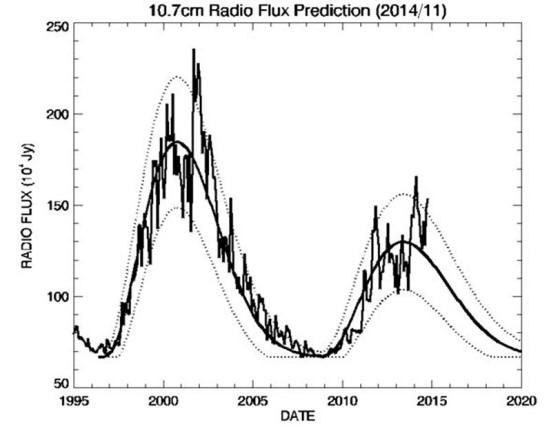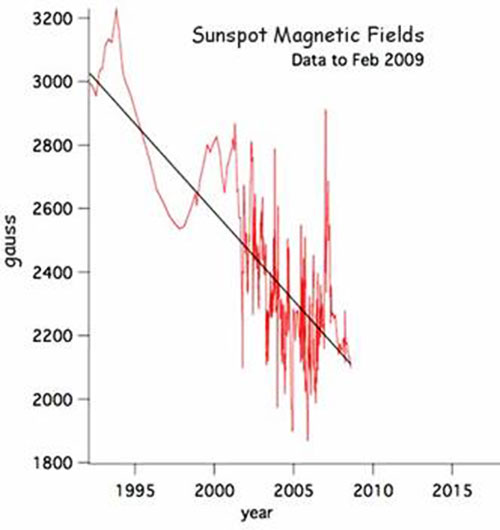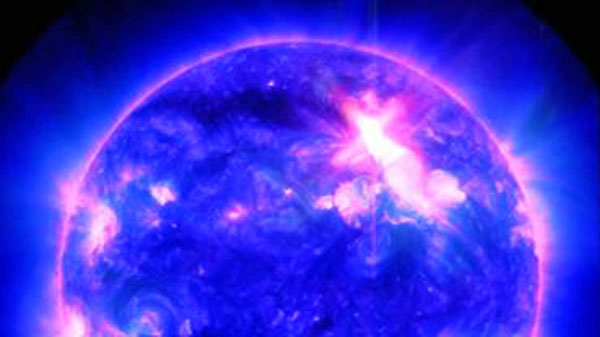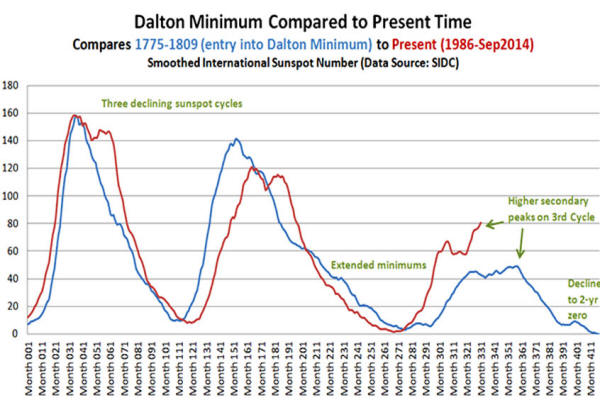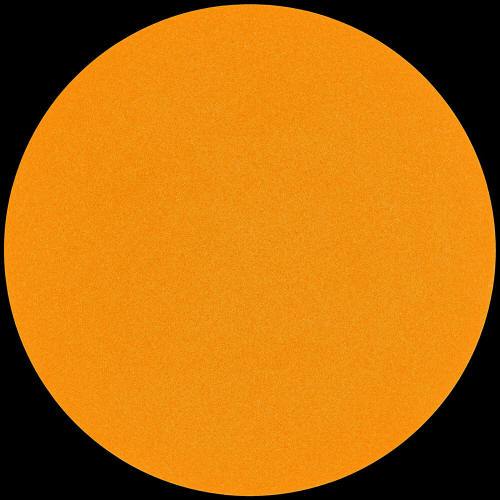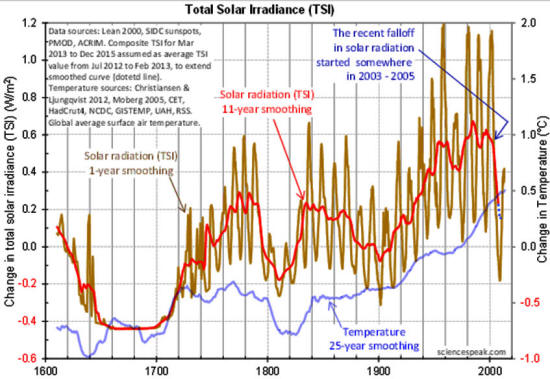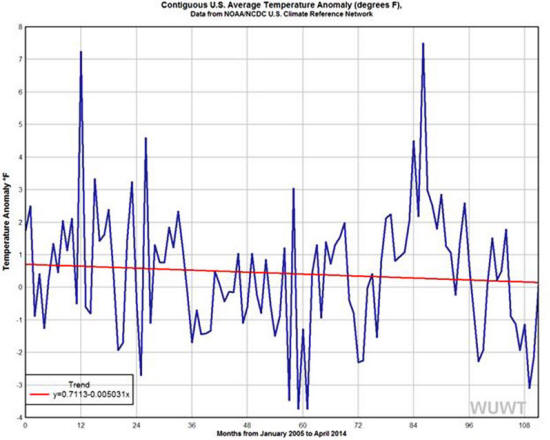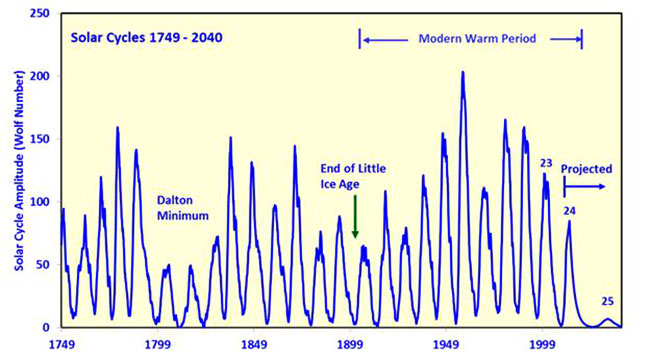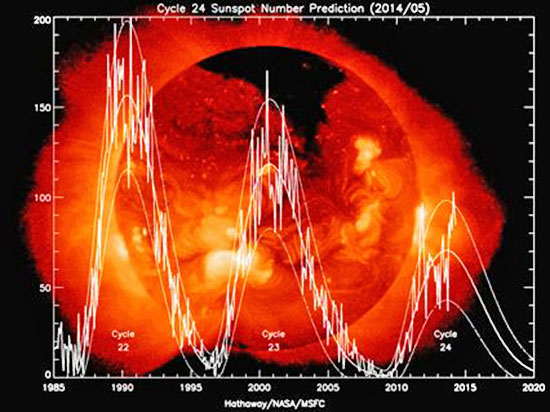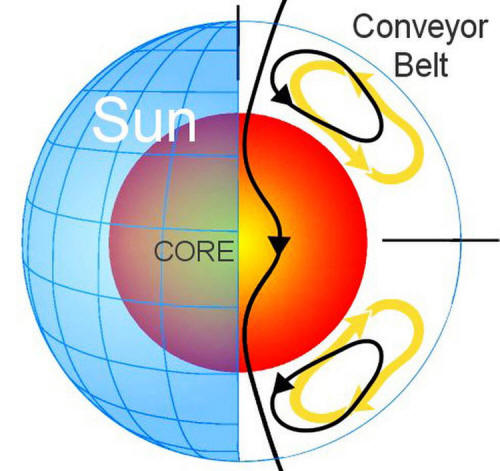|
All the global warming crowd can do is either ignore the Sun completely or pretend the Sun does not have an impact in the weather on earth, which wouldn't be true at all.
The Sun is the source of most of the energy that drives the biological and physical processes in the world around us. The rate of energy coming from the Sun changes slightly day to day.
Over many millennia the Earth-Sun orbital relationship can change the geographical distribution of the sun's energy over the Earth's surface. Changes in solar output obviously affects our climate,
Small fluctuations in solar activity have a large influence on climate.
Subtle connections between the 11-year solar cycle, the stratosphere, and the tropical Pacific Ocean work in sync to generate periodic weather patterns that affect much of the globe, according to research appearing in the journal Science Daily.
Dr. R. Timothy Patterson, professor of geology and director of the Ottawa-Carleton Geoscience Centre of Canada's Carleton University, says:
Diminished solar activity is the main reason we are facing such dangerous cold.
Solar activity is waning, so the average yearly temperature will begin to decline as well. Though intensified volcanic activity is adding to the faster than expected cooling, it is hard to measure how dozens of volcanic explosions are contributing.
However, we can see what is happening on the Sun.
Paul Dorian, meteorologist with Vencore Weather (now Perspecta Weather) reports on present solar conditions.
The German Herald reported on March 31, 2013,
It was May of 2013 that the headlines in Forbes Magazine read,
Scientists, the ones who still have their wits about them, have known for as long as 19 years that the world has been cooling and have predicted exactly where we now are.
Credit/SILSO data, Royal Observatory of Belgium, Brussels
Solar Radio Emissions
Another indicator of the level of solar activity is the flux of radio emission from the Sun at a wavelength of 10.7 cm (2.8 GHz frequency).
This flux has been measured daily since 1947. It is an important indicator of solar activity because it tends to follow the changes in the solar ultraviolet that influence the Earth's upper atmosphere and ionosphere.
Radio emissions have been shown to follow the sunspot number quite closely thus this chart is just one more proof of the sun's diminished heat giving rays that is giving rise to global cooling.
Warming just cannot happen without the full cooperation of the Sun.
On Sept. 23, 2008, in a briefing at NASA headquarters, solar physicists announced that the solar wind is losing power.
Curiously, the speed of the million-mph solar wind hasn't decreased much - only 3%. The change in pressure comes mainly from reductions in temperature and density. The solar wind is 13% cooler and 20% less dense.
'Cycle 25,' the next 11-year activity phase, will be one of the weakest in centuries, NASA predicts - a decrease that will mean fewer flares and more fleece sweaters.
In 2012 Joe Bastardi, one of the more prominent weathermen, was alarmed after the dramatic turnaround in weather in August of that year.
He said that it had to be,
Dalton comparison. Credit/SILSO data, Royal Observatory of Belgium, Brussels
This above graph by the Royal Observatory of Belgium plots the three cycles leading into the Dalton Minimum (in blue), overlaid with the most recent three cycles (in red).
The display is current through September 2014. Both sets of three cycles have shared similarities. The entire professional discussion in solar scientist circles is not about warming but about how cold it will get and for how long.
Presently in 2018 sunspot activity is crashing down to a minimum number of sunspot activity.
NASA solar physicist David Hathaway says,
During the Dalton Minimum (1790-1830), global temperatures plummeted, resulting in the "Year Without a Summer" in 1816.
The abnormally cold weather destroyed crops in northern Europe, the northeastern United States and eastern Canada.
Historian John D. Post called it,
The sun's current space-weather cycle is the most anemic in 100 years, scientists say.
Our star is now at "solar maximum," the peak phase of its 11-year activity cycle.
But this solar max is weak, and the overall current cycle, known as Solar Cycle 24, conjures up comparisons to the famously feeble Solar Cycle 14 in the early 1900s, researchers said.
This is what the Sun currently looks like. If you notice, the sun is completely free of sunspots. If there were sunspots, you would see some small dark circles forming on the surface of the Sun.
Dr. Willie Soon, an Astrophysicist at the Harvard-Smithsonian Center for Astrophysics says that,
According to NOAA and NASA, the sunspot cycle hit an unusually deep bottom from 2007 to 2009.
In fact, in 2008 and 2009, there were almost NO sunspots, a very unusual situation that had not happened for almost a century. Due to the weak solar activity, galactic cosmic rays were at record levels.
Solar Maximum, the sun's record-breaking sleep ended in 2010.
In 2011, sunspot counts jumped up. However, they remained low with a small peak in February of 2012. Throughout 2013, the Sun was relatively quiet.
We are now facing an extremely low period of solar activity over the coming years and decades. Due to the strong correlation of historical evidence, we can conclude that we are sitting right on the cusp of another mini ice age.
Sami K. Solanki of the Max Planck Institute for Solar System Research believed ahead of the rest that the Sun would leave its fifty to sixty year long grand maximum of the second half of the 20th century.
He had said previously that the Sun was more active in the second half of the 20th century than in the previous 8,000 years.
Solanki holds that a repeat of the Dalton Minimum [1] is most likely, and that the earth is in for an unusually deep and long solar minimum.
SSRC (Space and Science Research Corp.) Director John Casey said,
By the standard of spotless days, the ongoing solar minimum is the deepest in a century, NASA reports.
In 2008, no sunspots were observed on 266 of the year's 366 days (73%).
To find a year with more blank suns, you have to go all the way back to 1913, which had 311 spotless days (85%):
Remarkably, sunspot counts for 2009 have dropped even lower.
Dr. David Evans said,
This is an official graph and the trend is cooler
The BBC early in 2014 put out a video (above) warning of rapid deflation of solar activity. The video predicts the next ice age starting in forty years.
Leonard Nimoy broadcast on television (below video) in May of 1978 "The Coming Ice Age," a show where all manner of experts and climate scientists were trotted out to warn the world of the run-away global cooling that was just around the corner:
Mike Lockwood, professor of space environment physics, from the University of Reading, through an analysis of ice-cores, which hold a long-term record of solar activity, suggests the decline in activity on the Sun is the fastest that has been seen in 10,000 years.
The study, published in 2015, looked at past variations of solar activity.
In 2010, the study found, scientists estimated a mere 8% chance of a return to Maunder Minimum-like conditions within the next 40 years.
However,
The Sun is the Mother when it comes to Climate.
NASA solar physicist David Hathaway says,
During the Dalton Minimum (1790-1830), global temperatures plummeted, resulting in the "Year Without a Summer" in 1816. The abnormally cold weather destroyed crops in northern Europe, the northeastern United States and eastern Canada.
Historian John D. Post called it,
Dr. David Evans, an electrical engineer and mathematician, who earned six university degrees over ten years, including a PhD from Stanford University in electrical engineering said,
There is a delay - probably of around 11 years - between changes in sunlight and temperatures on Earth, says Evans.
We have had plenty of warnings through the last 10 years, which politicians have deliberately ignored...
Scientists warn that the Earth is just 15 years away from experiencing a "mini ice age" - something that has not happened in 300 years.
Solar scientists say that the latest model shows the Sun's magnetic waves will become offset in Cycle 25, which peaks in 2022. Then, in Cycle 26, solar activity will fall by 60 per cent.
Professor Valentina Zharkova at Northumbria University is suggesting there could be a 35-year period of low solar activity that could usher in an "ice age."
Zharkova and her team of researchers released a study on sunspot modeling, finding that solar activity could fall to levels not seen since the so-called "Little Ice Age" of the 1600s.
She is just one of many scientists who have warned us but presidents and Popes have just chosen to ignore them...
For years on NASA's official site we read on May 10, 2006,
The Great Conveyor Belt is a massive circulating current of fire (hot plasma) within the Sun.
It has two branches, north and south, each taking about 40 years to perform one complete circuit.
In recent years, however, the belt has decelerated to 0.75 m/s in the north and 0.35 m/s in the south.
According to theory and observation, the speed of the belt foretells the intensity of sunspot activity 20 years in the future.
A slow belt means lower solar activity; a fast belt means stronger activity.
Here we are at a peak period in Solar Cycle 24 and the Sun is quiet but it's going to get a lot quieter and a lot colder.
Interestingly Safe Haven, a financial site published the following on solar activity:
With the decline in solar activity, the number of Spotless days continues to grow. It's the way it works.
So far, this year there has been 17 days, or 52% for the year. In all of 2017, the number was 104 days or 28% and the year before it was 32 days or 9%.
For 2015 the count was zero, as it essentially was back to 2010...
References
|


